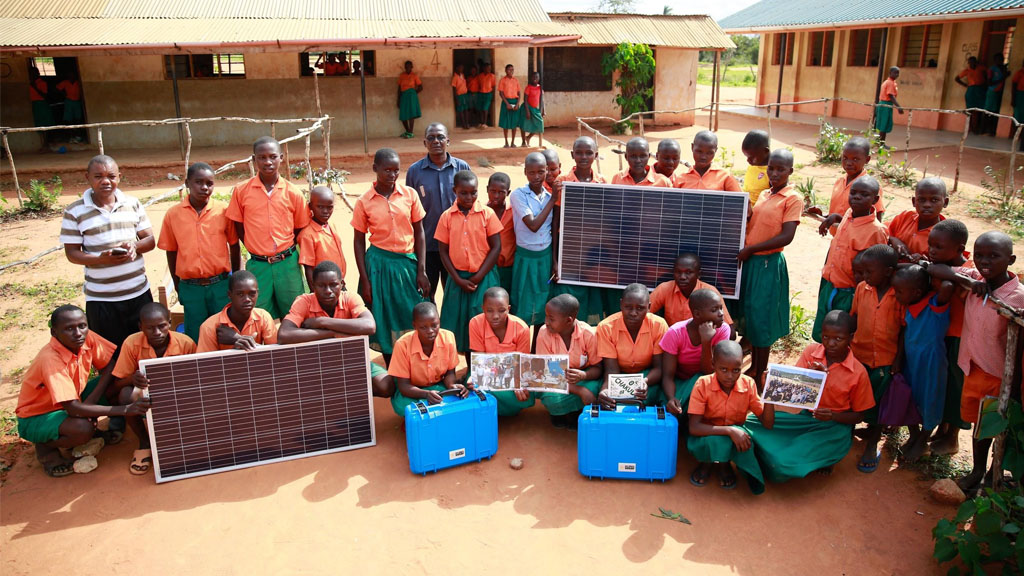Brief
Engaging Students in STEM Through a Solutionary Approach
Like most people, students want their work to matter. Of course it matters to them, their parents and their teachers, but what if it also matters to people outside the classroom walls? What if the work that students do in high school immediately changes lives for the better in the real world? Would this inspire them to learn more, particularly in STEM?
As students move into high school years, their awareness of the challenges in the real world grows as they study social issues in humanities classes. They react strongly as they encounter information about injustices, passionately debating the rights and wrongs on social issues in class. But the powerful discussion usually stops at the bell as they silo the experience and head for science class. Although their social studies class and science class parallel each other in the academic calendar, they often have little to do with one another in content, passion, or purpose. But what if we could link them? What if students could try to solve in science class some of the social justice problems they learn about in social studies classes? What if they could become solutionaries?
Solutionaries are motivated by compassion and justice and driven to cultivate their creative, critical, strategic and systems-thinking skills in order to address the underlying causes of entrenched and interconnected problems...without causing harm to people, animals, or the environment.”
—Zoe Weil-Institute of Human Education, Psychology Today May 14, 2019
The idea is that students don’t just learn about problems faced by real people in the real world; they actually try to do something about them either literally or figuratively. In literal cases, it can be through service learning with impact, which introduces deep inspiration around the purpose of the academics, countering the oft-said student question of “Why do I need to know this?” In other cases, it can be an exercise in innovation and entrepreneurship that lives within the classroom but engages creative thinking well beyond the classroom walls. Empowering solutionaries requires an interdisciplinary mindset where social studies and science come together, broadening interest through understanding and purpose.
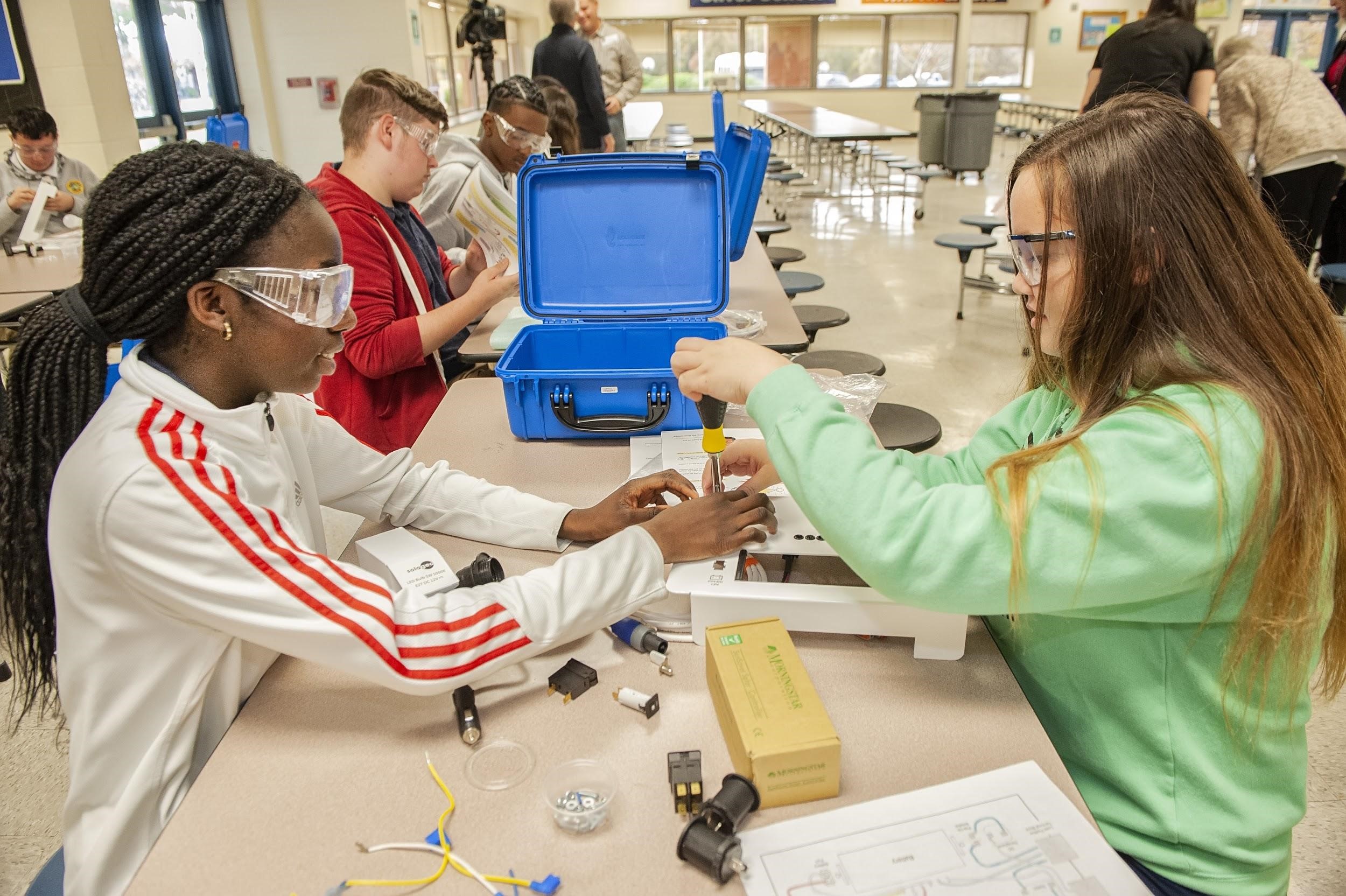
One example of a solutionary approach is the We Share Solar Program, which trains teachers in an experiential STEM education program linking practical engineering knowledge about solar energy with inspiring humanitarian service through the building and sharing of solar electric systems called We Share Solar Suitcases. Student-built Solar Suitcases are placed in rural schools in energy-poor situations such as refugee camps in East Africa, providing much needed light and device charging capacity.
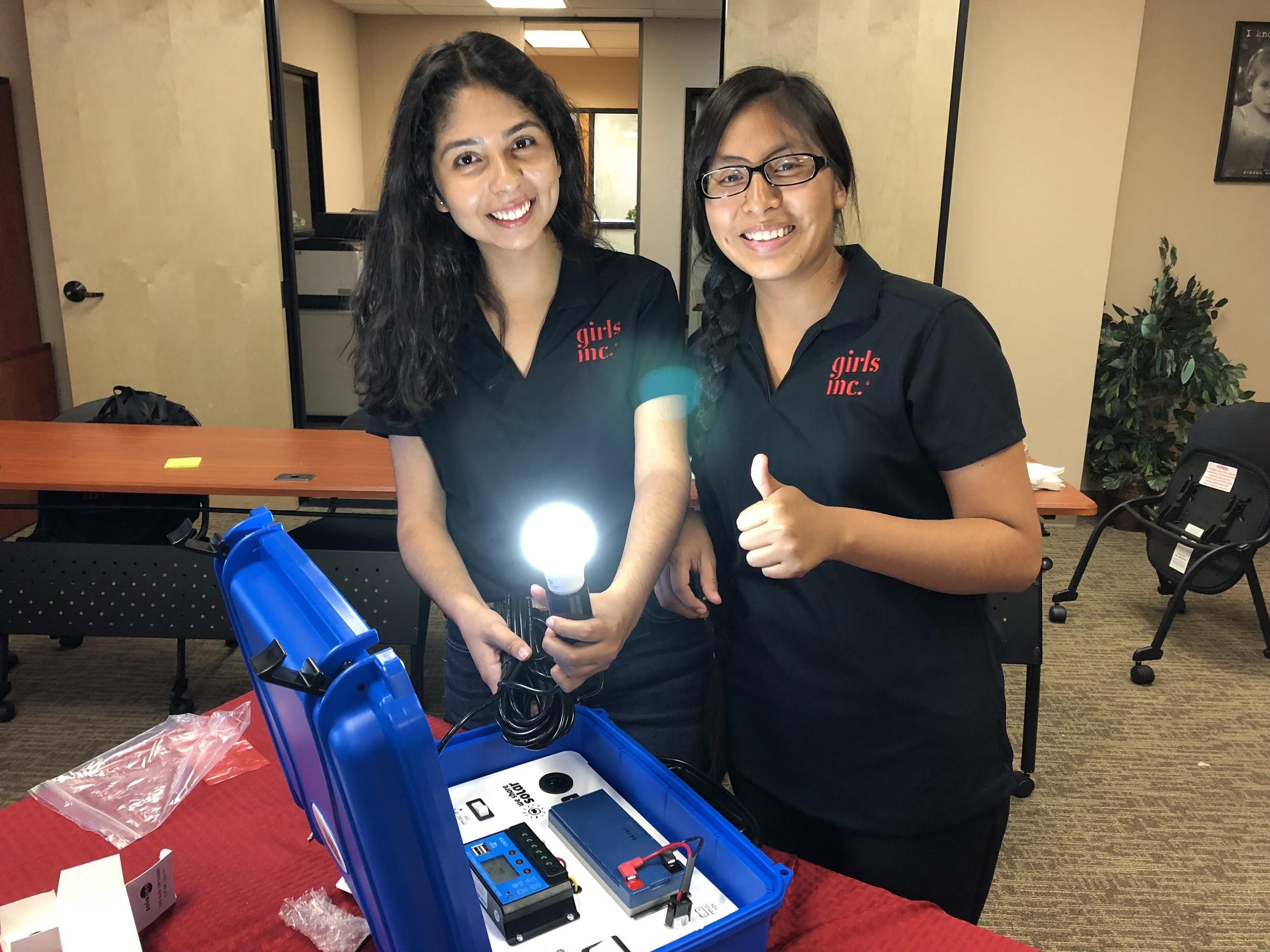
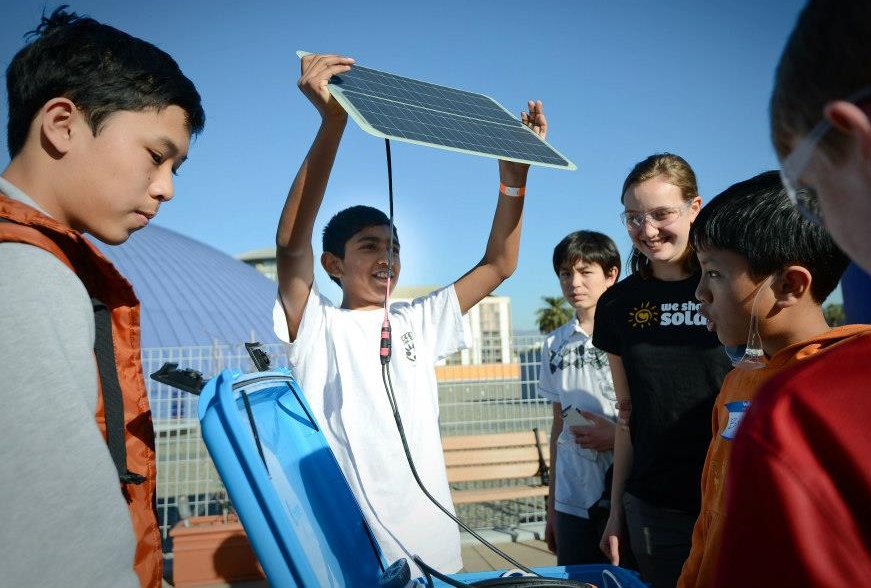
Driven by a sense of purpose, students rapidly acquire knowledge of solar electricity principles through hands-on learning while preparing the solar suitcases. See this video by ABC 7 news profiling students in a We Share Solar program. A research study with a large sample of students (347) conducted in the Twin Cities indicated that for the majority of students, participants in the We Share Solar program doing real-world work to help others was the most important part of their experience, particularly for girls.
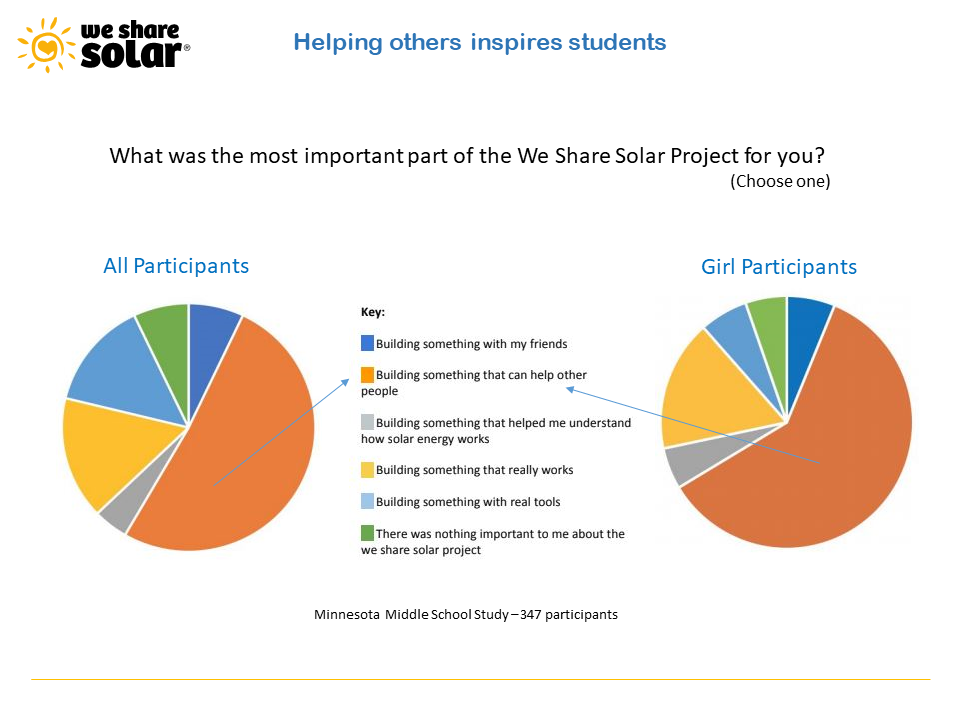
We Share Solar recently introduced a new program called We Share Solar Solutionaries through a pilot with 10 high schools in Minnesota. The project-based learning program enhances STEM learning with new lessons in a 5E format focused on deeper social studies, climate change, and energy justice content, including lessons on innovation and entrepreneurship. All lessons meet and identify Common Core, Next Generation, and National Council standards. Pilot results are expected in Spring 2021.
Among the many questions for today’s STEM teachers is “How can we engage a more diverse student population in STEM?” Perhaps a solutionary approach will provide just the inspiration they need.
Gigi Dekko Goldman (gigi@wecaresolar.org) is co-founder of We Share Solar in Berkeley, California.
citation: Goldman, G.D. 2021. Engaging students in STEM through a solutionary approach. Connected Science Learning 3 (1). https://www.nsta.org/connected-science-learning-january-february-2021/engaging-students-stem-through-solutionary
photo credit for opening photo: Brian Inganga
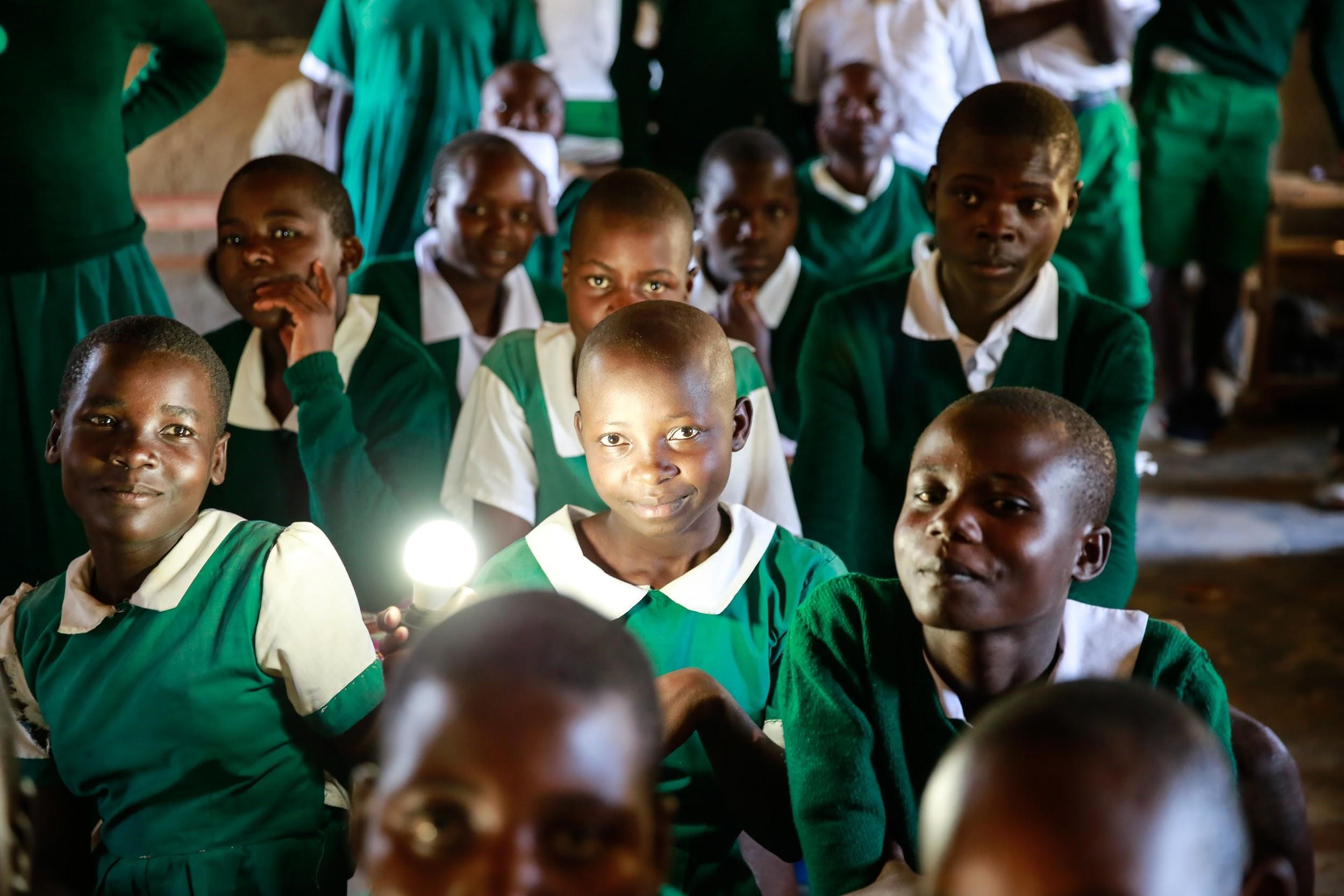
5E Climate Change Engineering Interdisciplinary STEM Informal Education



